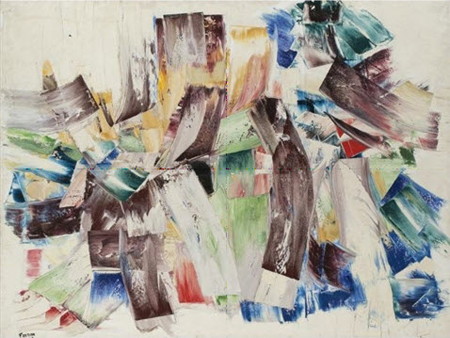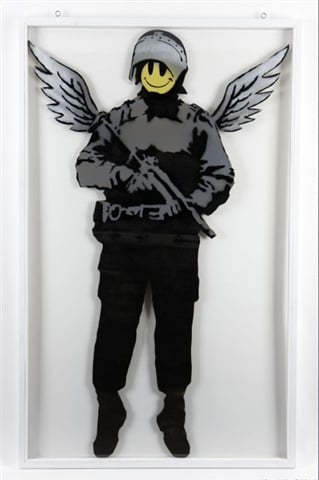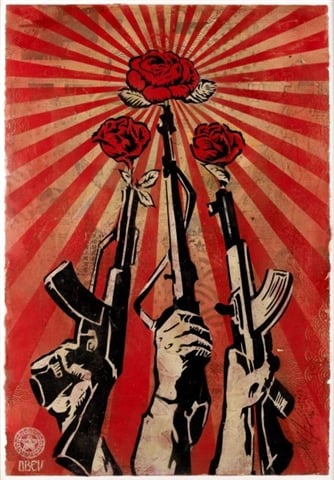Auctions
Art in the Urban Environment
A look at the rise and acceptance of urban at in auction and fine art circles.

A look at the rise and acceptance of urban at in auction and fine art circles.

Growing up in Montreal, the “métro” was something I traveled on practically every day. It was fast, easy, and by far the most convenient way of getting around the city. I remember being taught at an early age in school about the art in the subway. Curious, I would ride the metro with my friends, looking for the art and discovering all the variations. We enjoyed the fact that the benches in one station looked like big hamburgers, and in another, seemed as if they wanted to fold down and trap us inside. We were enchanted by the grand chandeliers over the stairways, and we feared that the spiky metal hanging sculptures would fall and hurt us. We didn’t understand why the art was there or what it meant, nor did we realize that most subway systems in other cities did not feature art in this way.

Marcelle Ferron, Untitled, 1960, oil on canvas, sold at Sotheby’s Toronto
The art in the Montreal Metro, which ranges from the purely figural to the abstract, and which presents themes related to the city of Montreal, the activities of its people, and of the metro itself, was a quite deliberate aspect of a city-wide refurbishment project by the mayor of the city and his officials at the time of the 1967 International and Universal Exposition (Expo 67), to showcase Montreal’s history and enrich the lives of the city’s residents. For the metro project, different architects were hired to design the stations, and all were given the responsibility of selecting artists to create original works for each location. Artists such as Marcelle Ferron (Canadian, 1924–2001), Jordi Bonet (Canadian, 1932–1979), and Charles Daudelin (Canadian, 1920–2001), who now sell regularly on the international art market, were a few of the artists specifically selected for this initiative.

Jordi Bonet, Untitled, painted wood, sold at Ritchies, Toronto, Canada

Charles Daudelin, Untitled (in 2 parts), 1972, gilt bronze, sold at Waddington’s, Toronto, Canada
Moving to New York City much later in life, I was confronted with a very different kind of art gracing the city’s subway system. Colorful and dynamic, engaging and curious, the graffiti that covered the walls, stairwells, and train cars in New York City also captivated my attention. It differed greatly from what I knew in Montreal in terms of its materials (often spray paint), as well as its transient quality, but it was still loudly communicative. Much like the Montreal city officials had recognized in 1967, street artists in New York City, and in Europe, seemed to inherently understand that art integrated into public spaces speaks directly and naturally to its audience. By virtue of its placement, the art forces the viewer to interact with it on various levels.
While Montreal selected established or up-and-coming Fine artists to be a part of their urban redesign, the opposite phenomenon seems to be happening in the art world. Urban Art is now gracing the walls of prominent galleries and fetching sensational prices at auction. Every year, works by Street and Graffiti artists are sold in Contemporary Art auctions at Christie’s, Sotheby’s, and Bonhams. Alan Montgomery, Contemporary Art specialist at Bonhams is quoted as saying: “What we have found is that contemporary investors are now buying Urban Art—for example, 1980s New York graffiti pieces are being looked at with an academic perspective.” This “academic perspective” was also recently evident in the discussion panel at the MoMA entitled “Writers and Writers: Narratives on the Page and in the Street,” which explored “narrative and identity in both literary and graffiti cultures.” Auction houses such as Artcurial—Briest, Poulain, F.Tajan and Fine Art Auctions Miami hold entire sales dedicated to Graffiti and Urban Art, and artists such as Keith Haring (American, 1958–1990) and Banksy (British, b. ca.1974) have become household names.

Banksy, Flying copper (double-sided), 2003, spray paint and acrylic on cardboard, sold at Artcurial—Briest, Poulain, F. Tajan, Paris, France

Shepard Fairey, Guns and roses, 2006, mixed media, pochoir, and collage on paper, sold at Artcurial—Briest, Poulain, F.Tajan, Paris, France
Because Urban Art is characterized by its existence within a public space, it is often viewed as vandalism. However, far from trying to destroy, Urban artists view their surroundings as inspiration, and as a way to communicate about themselves and life within an urban environment. Perhaps what the Fine Art world is realizing now in its newfound enthusiasm for Urban Art and artists is what the city of Montreal in the 1960s was putting into practice: art infused into the everyday is undeniable, memorable, interactive, forthcoming, and incredibly powerful.